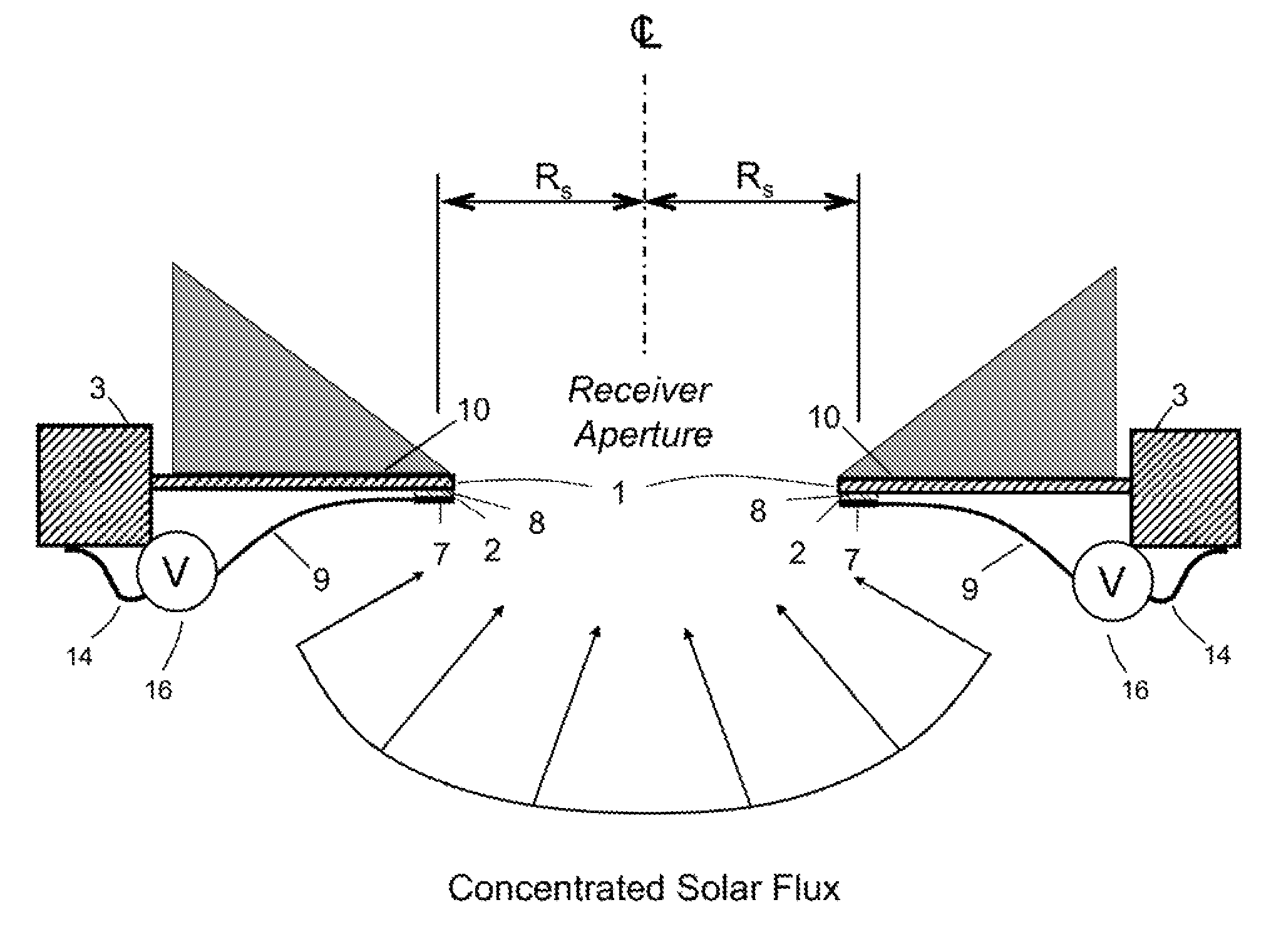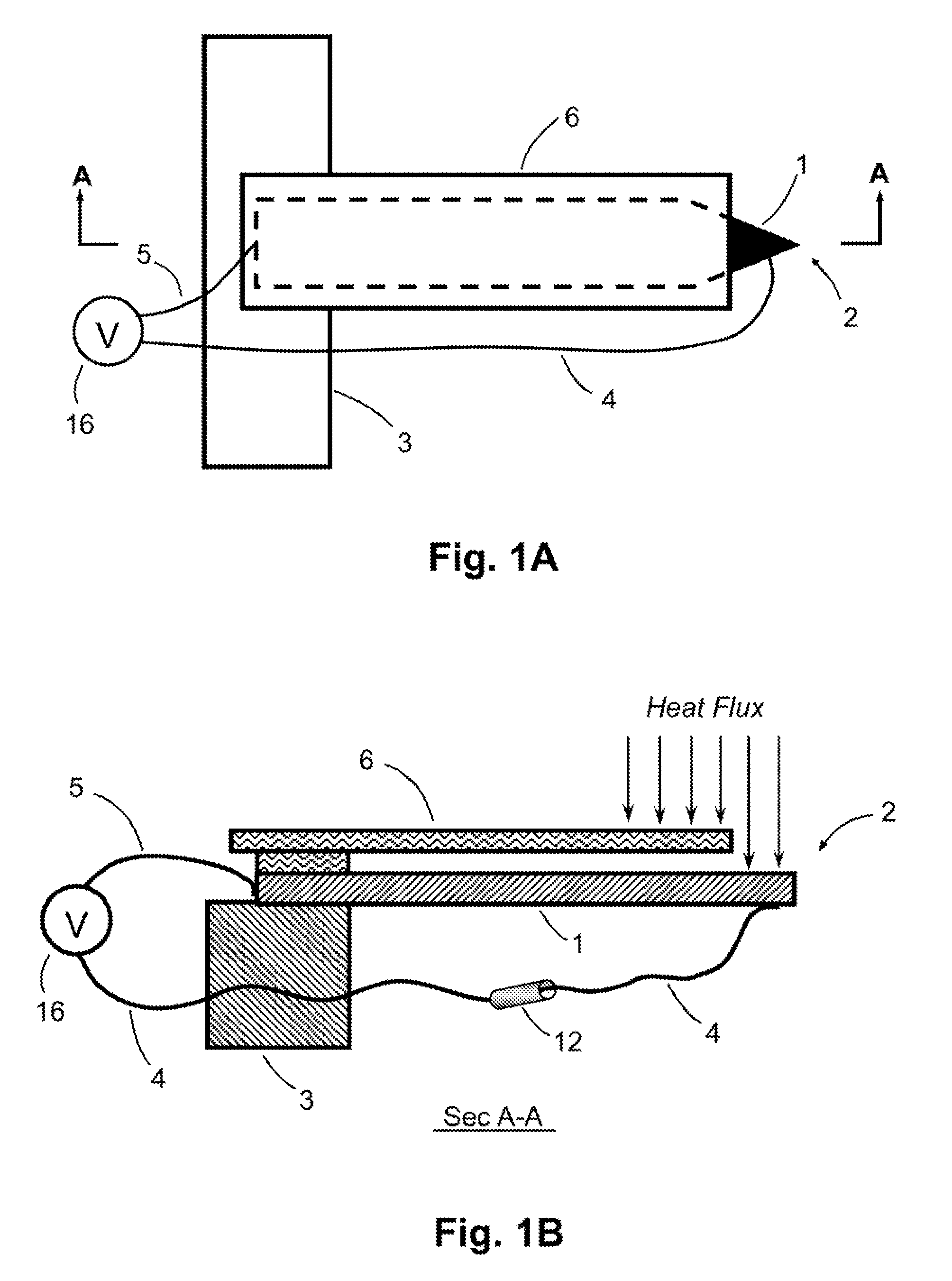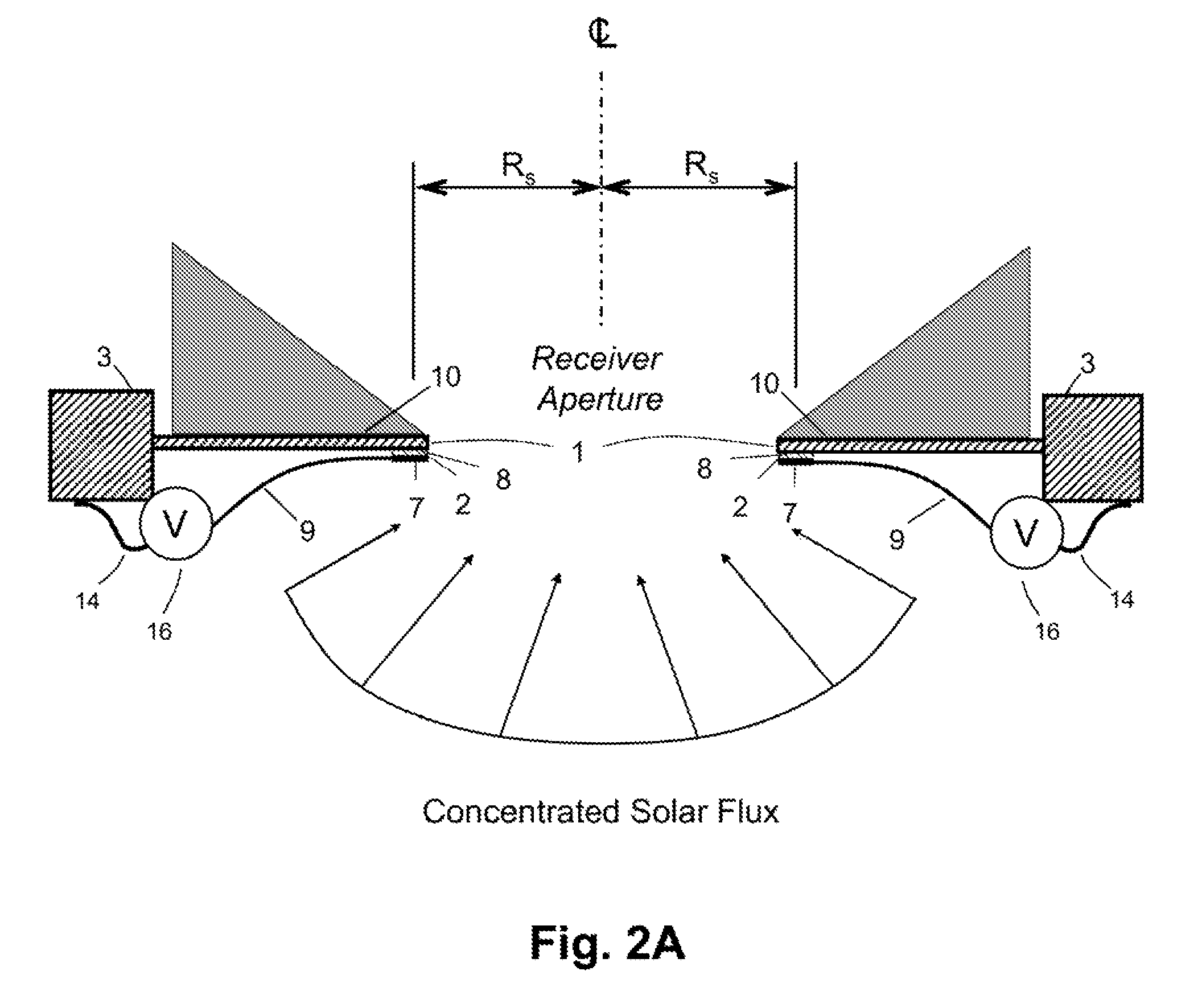Tracking heat flux sensors for concentrating solar applications
a technology of heat flux sensor and concentrating solar energy, which is applied in the direction of heat measurement, instruments, optical radiation measurement, etc., can solve the problems of tracking errors, differences between the measured and actual sun position relative to the collector/receiver axis, and tracking errors, so as to maximize the centering potential of the method
- Summary
- Abstract
- Description
- Claims
- Application Information
AI Technical Summary
Benefits of technology
Problems solved by technology
Method used
Image
Examples
Embodiment Construction
[0035]The tracking heat flux sensor of the present invention comprises two closely-coupled thermocouple junctions with opposing electrical polarity that are separated by a thermal resistor. This arrangement creates an electrical signal proportional to heat flux intensity, and largely independent of temperature. The sensors are thermally grounded to allow a temperature difference to develop across the thermal resistor; and are cooled by a heat sink to maintain an acceptable operating temperature.
[0036]In one embodiment, a tracking heat flux sensor can comprise: an absorber plate made of a first metal; a thermal bus made of the first metal; a thermal resistor plate made of a second metal different than the first metal, wherein the thermal resistor plate is attached to, and sandwiched in-between, the absorber plate and a near end of the thermal bus; a first dissimilar metal thermocouple junction located at an interface between the absorber plate and the resistor plate; a second dissimi...
PUM
| Property | Measurement | Unit |
|---|---|---|
| wedge angle | aaaaa | aaaaa |
| thick | aaaaa | aaaaa |
| thick | aaaaa | aaaaa |
Abstract
Description
Claims
Application Information
 Login to View More
Login to View More - R&D
- Intellectual Property
- Life Sciences
- Materials
- Tech Scout
- Unparalleled Data Quality
- Higher Quality Content
- 60% Fewer Hallucinations
Browse by: Latest US Patents, China's latest patents, Technical Efficacy Thesaurus, Application Domain, Technology Topic, Popular Technical Reports.
© 2025 PatSnap. All rights reserved.Legal|Privacy policy|Modern Slavery Act Transparency Statement|Sitemap|About US| Contact US: help@patsnap.com



